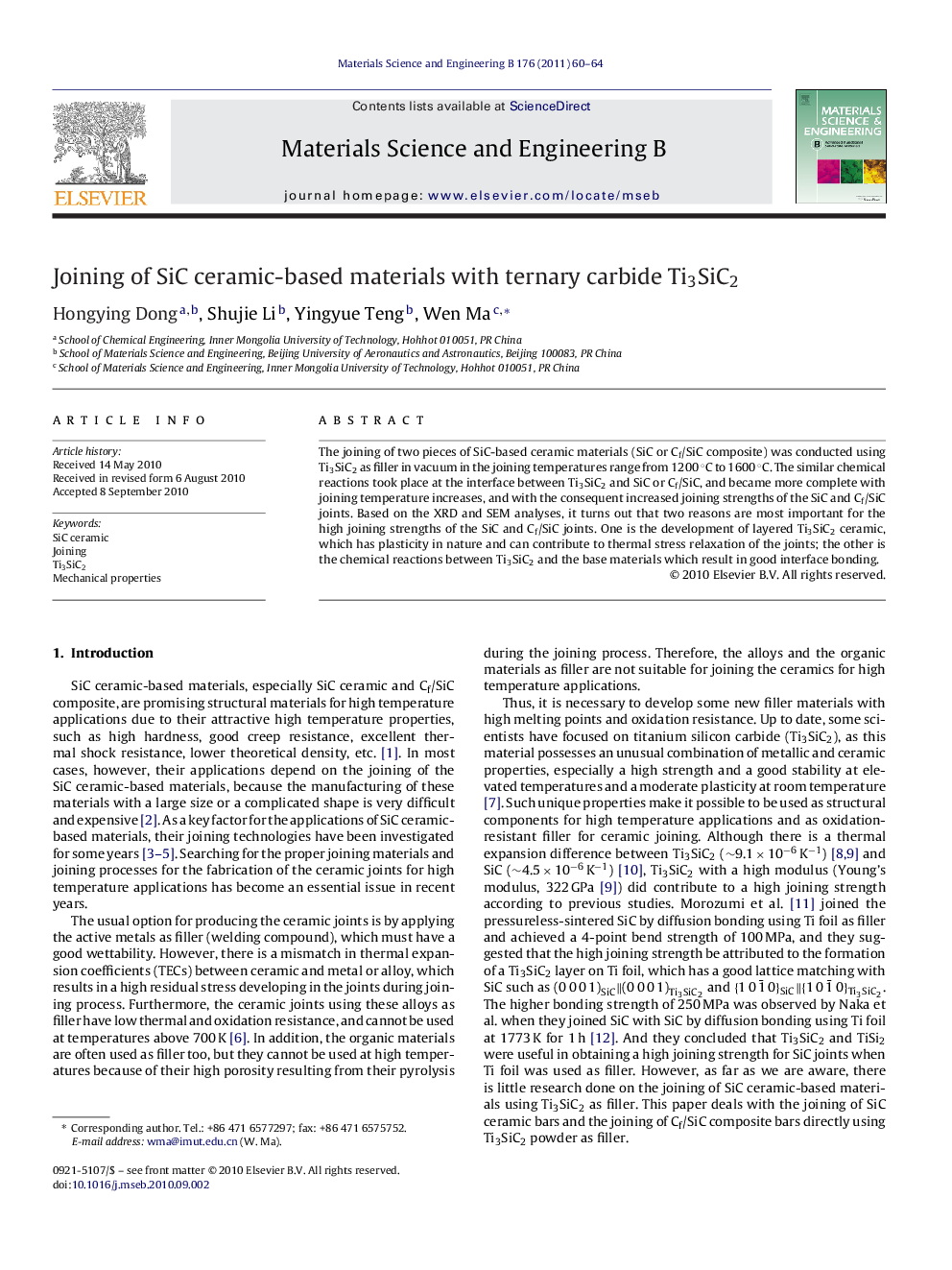| Article ID | Journal | Published Year | Pages | File Type |
|---|---|---|---|---|
| 1529789 | Materials Science and Engineering: B | 2011 | 5 Pages |
The joining of two pieces of SiC-based ceramic materials (SiC or Cf/SiC composite) was conducted using Ti3SiC2 as filler in vacuum in the joining temperatures range from 1200 °C to 1600 °C. The similar chemical reactions took place at the interface between Ti3SiC2 and SiC or Cf/SiC, and became more complete with joining temperature increases, and with the consequent increased joining strengths of the SiC and Cf/SiC joints. Based on the XRD and SEM analyses, it turns out that two reasons are most important for the high joining strengths of the SiC and Cf/SiC joints. One is the development of layered Ti3SiC2 ceramic, which has plasticity in nature and can contribute to thermal stress relaxation of the joints; the other is the chemical reactions between Ti3SiC2 and the base materials which result in good interface bonding.
